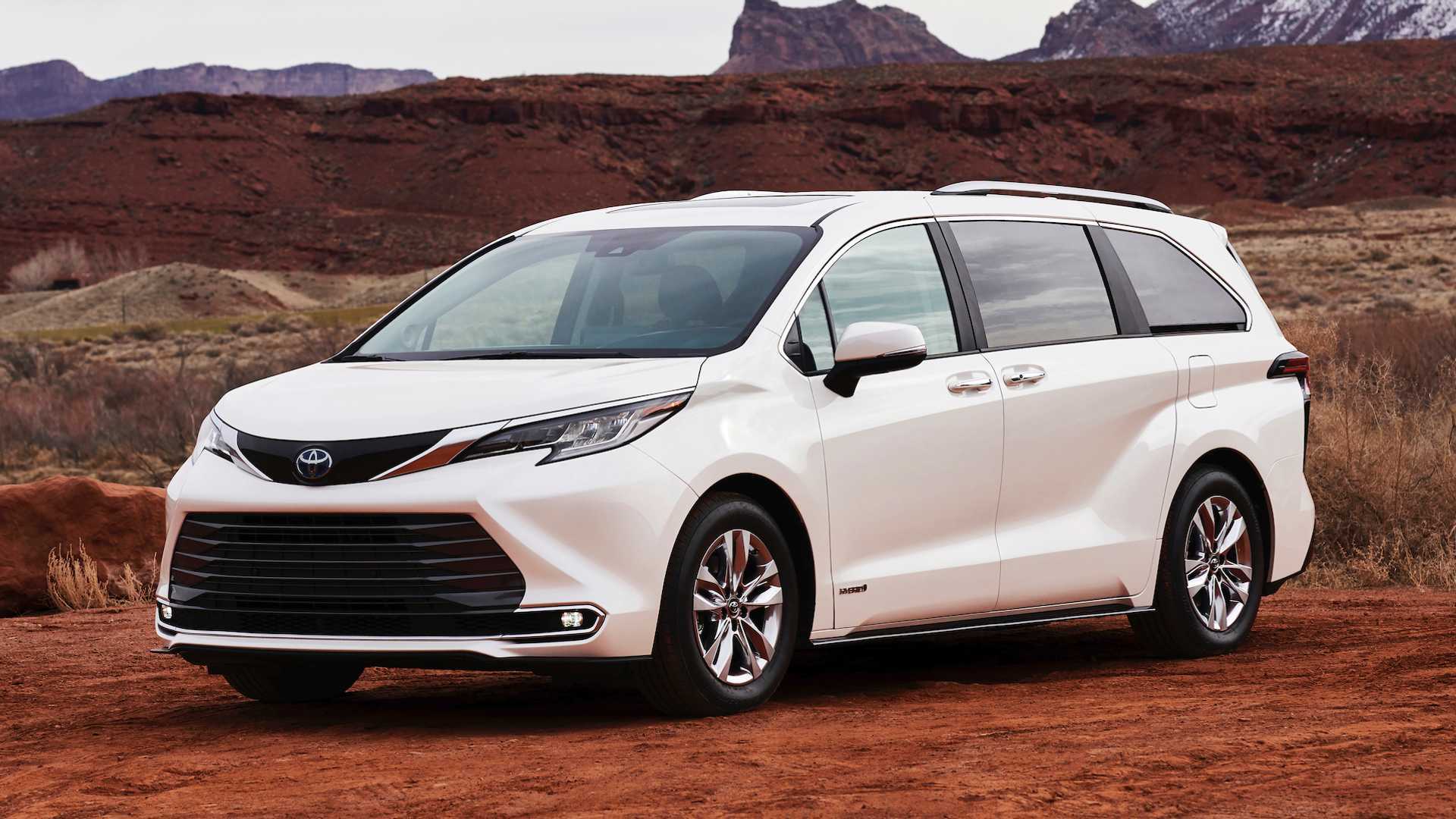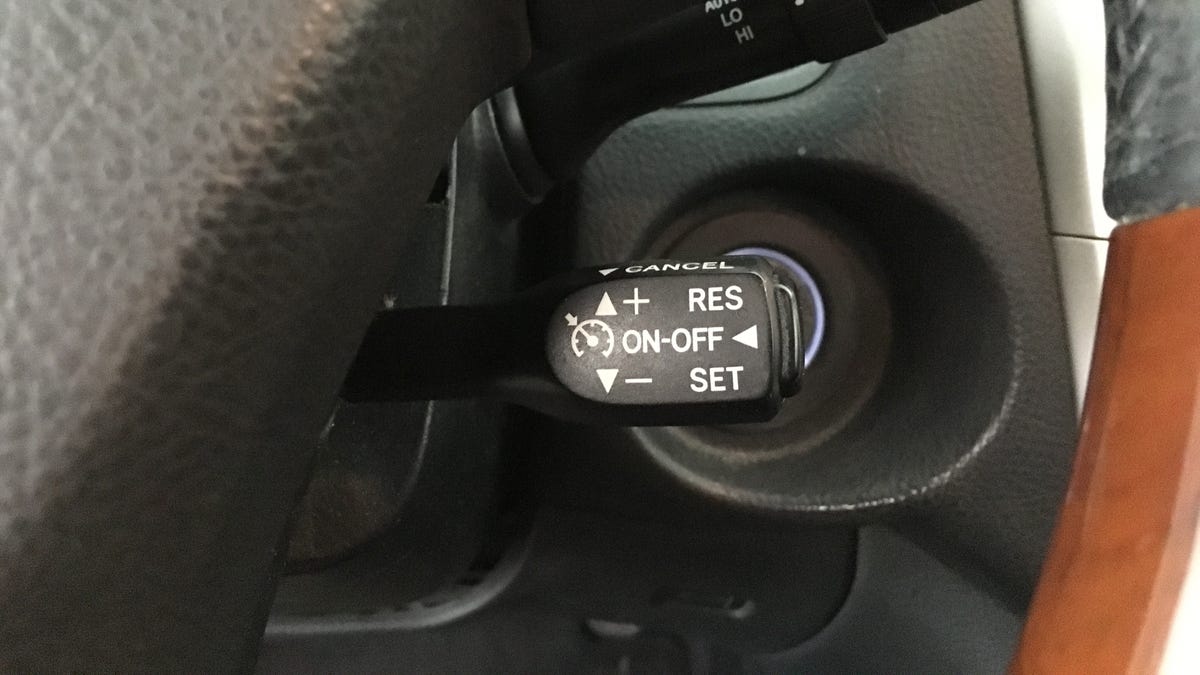You are using an out of date browser. It may not display this or other websites correctly.
You should upgrade or use an alternative browser.
You should upgrade or use an alternative browser.
2021 Toyota Sienna
- Thread starter Gecko
- Start date
Never say never...

 www.motor1.com
www.motor1.com

Toyota Sienna Prime Technically Possible, But Unlikely
The new Toyota Sienna is the first minivan to go full hybrid, but could it get a plug-in Prime option as well?
We spoke with Toyota executives about the new Sienna and Venza crossover via video conference call, and learned that a Sienna Prime is "technically" possible – but unlikely. Jack Hollis, Group Vice President and General Manager of Toyota Marketing, says that there are "no plans on either [Sienna or Venza Prime] at this point."
Joaquin Ruhi
Moderator
- Messages
- 1,529
- Reactions
- 2,434
Yes, the new Sienna is a very classy-looking update on the current decade-old one, but I share @F1 Silver Arrows' deep disappointment in the absence of the V6 in the new Sienna. I told myself that perhaps we'd see a Sienna Prime with V6 power levels sooner rather than later, and now they're saying it's unlikely... 😡Never say never...

Toyota Sienna Prime Technically Possible, But Unlikely
The new Toyota Sienna is the first minivan to go full hybrid, but could it get a plug-in Prime option as well?www.motor1.com
maiaramdan
Expert
- Messages
- 1,836
- Reactions
- 1,423
I am also very sad honestly
As this mill can be found in a lot of cars, from Camry & Avalon to the SUVs Highlander & Venza to the Sienna
and that's because I think that Toyota take a lot of time to master this mill near to perfect and it's by its own a combination between PHEV & HEV
Maybe they wanted to put it first in the soon to be facelifted ES , 5RX and 2NX before other Toyota's
Who knows
As this mill can be found in a lot of cars, from Camry & Avalon to the SUVs Highlander & Venza to the Sienna
and that's because I think that Toyota take a lot of time to master this mill near to perfect and it's by its own a combination between PHEV & HEV
Maybe they wanted to put it first in the soon to be facelifted ES , 5RX and 2NX before other Toyota's
Who knows
The A25A/B-FXS is kind of a problem child in the Dynamic Force family right now. First the faulty pump issue (though it's mostly fixed in NA and not an engine-related issue), then the oil dilution which is impossible to fix (since it's an inherent design).I am also very sad honestly
As this mill can be found in a lot of cars, from Camry & Avalon to the SUVs Highlander & Venza to the Sienna
and that's because I think that Toyota take a lot of time to master this mill near to perfect and it's by its own a combination between PHEV & HEV
Maybe they wanted to put it first in the soon to be facelifted ES , 5RX and 2NX before other Toyota's
Who knows
What I'll say is the Dynamic Force family will not go down in history as a 'indestructible Toyota engine' like the "xZ" and "xR" family of the 90s and 00s. They are just too complicated and too stressed to earn that status, but that's true for any modern engine family. Comparatively it should remain the most dependable available today.
There are priorities. Minivans are low volume compared to SUVs, so they must prioritize the PHV powertrain for the RAV4, Highlander, NX, and RX. The bottleneck is battery production. Panasonic's prismatic and 18650 lines are pretty full right now. Low priority products have to wait. Low priority markets have to wait. They also have to consider CAFE since there are higher priority products that use high fuel consumption engines, so minivan again has to make way.Yes, the new Sienna is a very classy-looking update on the current decade-old one, but I share @F1 Silver Arrows' deep disappointment in the absence of the V6 in the new Sienna. I told myself that perhaps we'd see a Sienna Prime with V6 power levels sooner rather than later, and now they're saying it's unlikely... 😡
The 'pure hybrid' push is actually intentional. In one of the investor relations presentations, Akio Toyoda listed four priority goals for its four main global regions:
>>JDM: accelerate the consolidation of the dealership network
>>China: achieve the 2 million annual production target and expand PHV/BEV adoption
>>EU: re-adjust the hybrid marketing campaign (discontinuation of the word 'self-charging EV') and fix the misunderstanding among European customers caused by it (in response to Norway's ban on their hybrid ads).
>>USA: accelerate the push to hybrids ("25% by 2025") by forcing pure hybrid products and eliminating high fuel consumption options.
So American buyers have to deal with the new reality that they will be buying fewer cylinders than before. Every carmaker is doing that and you just have to be grateful you can still buy V6 in sedans and SUVs. The adoption rate of hybrids in USA has been disappointingly low for Toyota. Less than 10% in 2020 is way too low so they will force it by removing options.
At the very least this forcing move is better than replacing the V6 with a 2.0T.
Last edited:
maiaramdan
Expert
- Messages
- 1,836
- Reactions
- 1,423
@ssun30 , I was talking about the system, all of it, the engine, the motors & the batteries
The system is unique from what I read, it can be HEV it can be PHEV or it can be Toyota current RAV4 prime system which is indeed a PHEV that can work 100% like HEV !!!
That system burb a lot of R&D cash, and they can mated to it any engine from any engine family, but they have a gem system in their hands
The system is unique from what I read, it can be HEV it can be PHEV or it can be Toyota current RAV4 prime system which is indeed a PHEV that can work 100% like HEV !!!
That system burb a lot of R&D cash, and they can mated to it any engine from any engine family, but they have a gem system in their hands
Last edited:
LexsCTJill
Follower
- Messages
- 281
- Reactions
- 200
Now we wait to see if this feature turns up on the next new or facelifted Lexus model (IS, ES and NX come to mind).Did anyone notice? The turn signal and wiper stalks are backlit...That is a very impressive touch.
View attachment 4006
LexsCTJill
Follower
- Messages
- 281
- Reactions
- 200
Now we wait to see if this feature turns up on the next new or facelifted Lexus model (IS, ES and NX come to mind).
Interesting. My guess is no.....Toyota used to have backlit cruise control stalks for the Rav4, Sienna and Highlander, those never ever made it to the Lexus brand.
Toyota shares alot of parts with the Lexus brand to keep costs down, I wouldnt be suprised if these come to a them albeit with a different LED background to share the same lighting theme of Lexus products.
GX cruise control stalk vs Toyota cruise control stalk
TGNA shift boots vs current K platform RX shift selector
GX cruise control stalk vs Toyota cruise control stalk
TGNA shift boots vs current K platform RX shift selector
LexsCTJill
Follower
- Messages
- 281
- Reactions
- 200
Toyota shares alot of parts with the Lexus brand to keep costs down,
Like I mentioned in the past, the RAV4, HL and Sienna all had backlit cruise control stalks...a Toyota thing only. (I believe it was a US supply thing)
GX cruise control stalk vs Toyota cruise control stalk
Whats the difference?
There is none. Now that Toyota and Lexus will be using the TGNA group of platforms, I`m expecting things to get even closer.Like I mentioned in the past, the RAV4, HL and Sienna all had backlit cruise control stalks...a Toyota thing only. (I believe it was a US supply thing)
Whats the difference?
LexsCTJill
Follower
- Messages
- 281
- Reactions
- 200
There is none. Now that Toyota and Lexus will be using the TGNA group of platforms, I`m expecting things to get even closer.
The new ES350 and our Avalon use different turn/wiper stalks and the cruise switch are also quite different.

Toyota Has Finally Stopped Using the Cruise Control Stalk
The press embargo on the 2018 Camry has lifted, and the flood of reviews has hit us. In this time, I came to realize that, rather embarrassingly, I am actually excited about this new Camry and the engine tech it’s debuting. But what truly made me lose my mind was the cruise control buttons on...
 oppositelock.kinja.com
oppositelock.kinja.com
LexsCTJill
Follower
- Messages
- 281
- Reactions
- 200

Toyota Has Finally Stopped Using the Cruise Control Stalk
The press embargo on the 2018 Camry has lifted, and the flood of reviews has hit us. In this time, I came to realize that, rather embarrassingly, I am actually excited about this new Camry and the engine tech it’s debuting. But what truly made me lose my mind was the cruise control buttons on...oppositelock.kinja.com
I am a little confused on your position.
I am a little confused on your position.
Thats in reference to the cruise control stalks mentioned in my post earlier. Vehicles across the Toyota range have been using those same switches for a while. Look forward to that feature to hop on over in the upcoming lineup
dbthompson
Fan
- Messages
- 43
- Reactions
- 50
I have heard that ordering for 2021 Siennas should open August 1.
Tragic Bronson
Expert
- Messages
- 3,165
- Reactions
- 3,785
We're so used to it, that I might miss it if I had to get into a newer T/L vehicle.
Toyota Has Finally Stopped Using the Cruise Control Stalk
The press embargo on the 2018 Camry has lifted, and the flood of reviews has hit us. In this time, I came to realize that, rather embarrassingly, I am actually excited about this new Camry and the engine tech it’s debuting. But what truly made me lose my mind was the cruise control buttons on...oppositelock.kinja.com
F1 Silver Arrows
Expert
- Messages
- 2,572
- Reactions
- 4,180
Same.We're so used to it, that I might miss it if I had to get into a newer T/L vehicle.
Ian Schmidt
Moderator
- Messages
- 2,404
- Reactions
- 4,245
The new buttons work very similarly to the stalk, it's not much of an adjustment to be honest.
-
This site uses cookies to help personalise content, tailor your experience and to keep you logged in if you register.
By continuing to use this site, you are consenting to our use of cookies.
